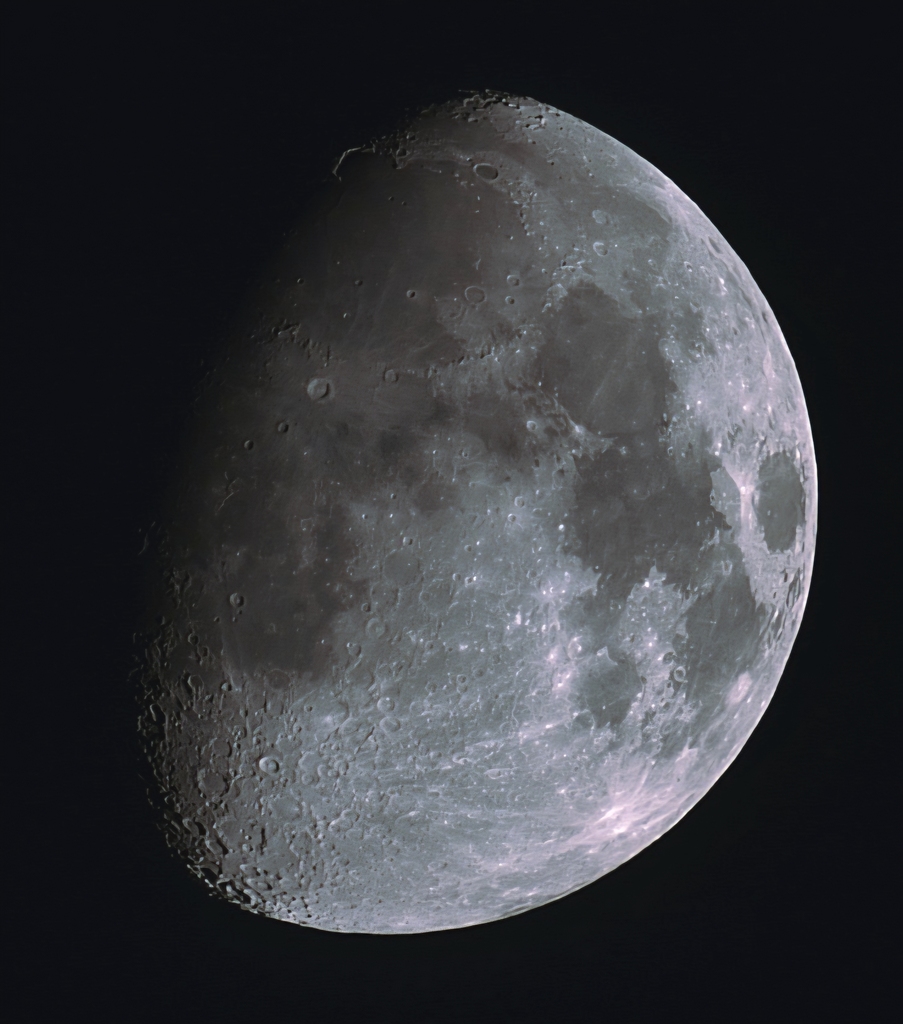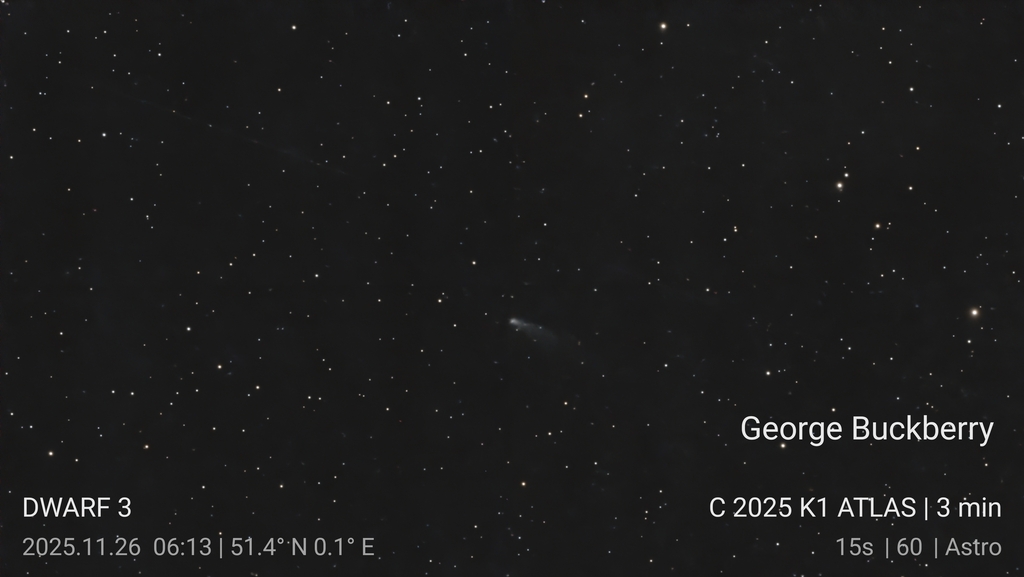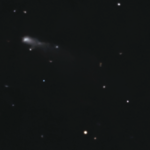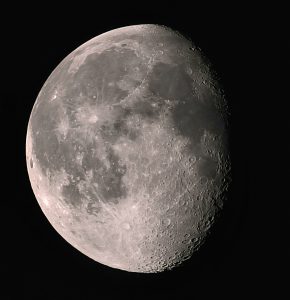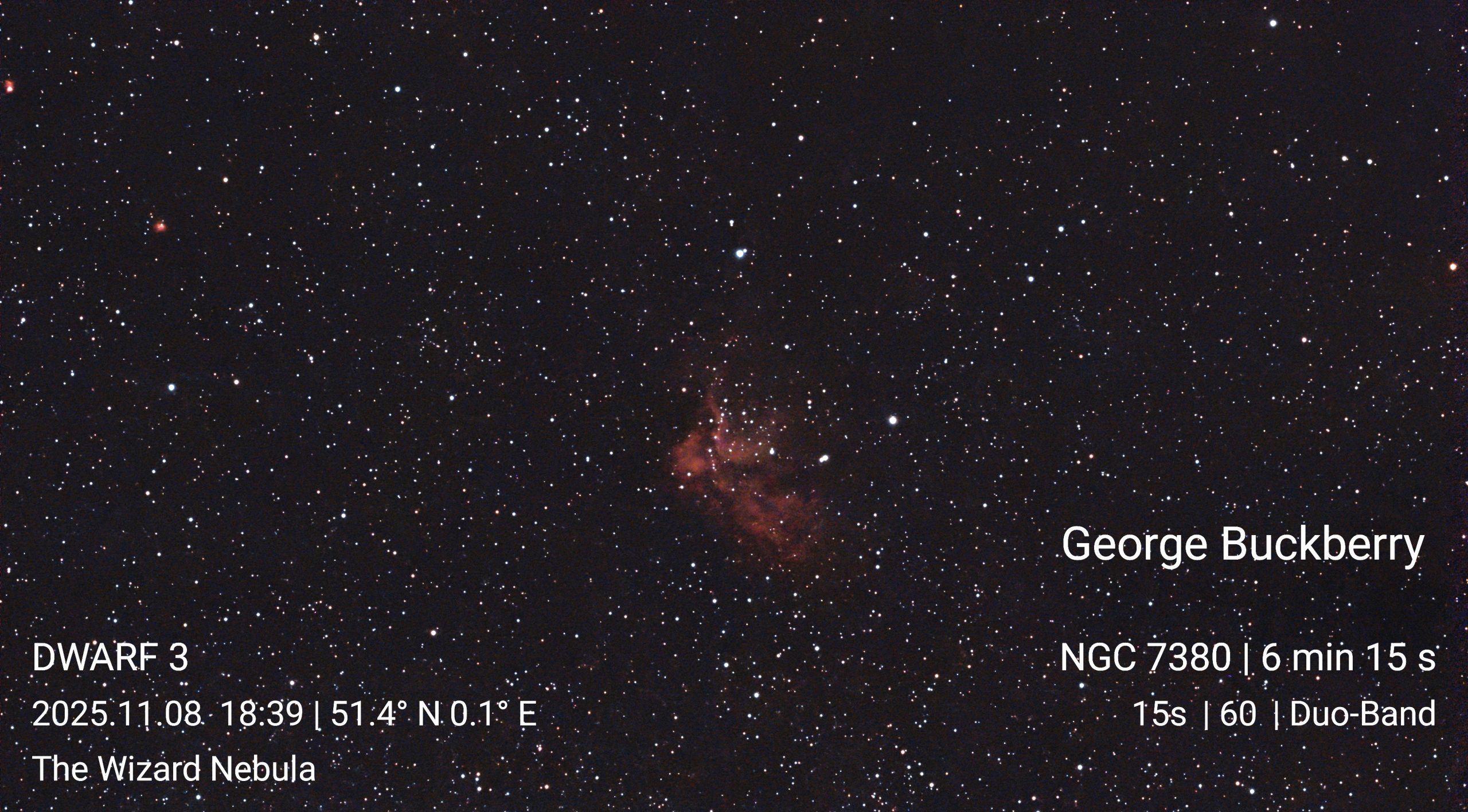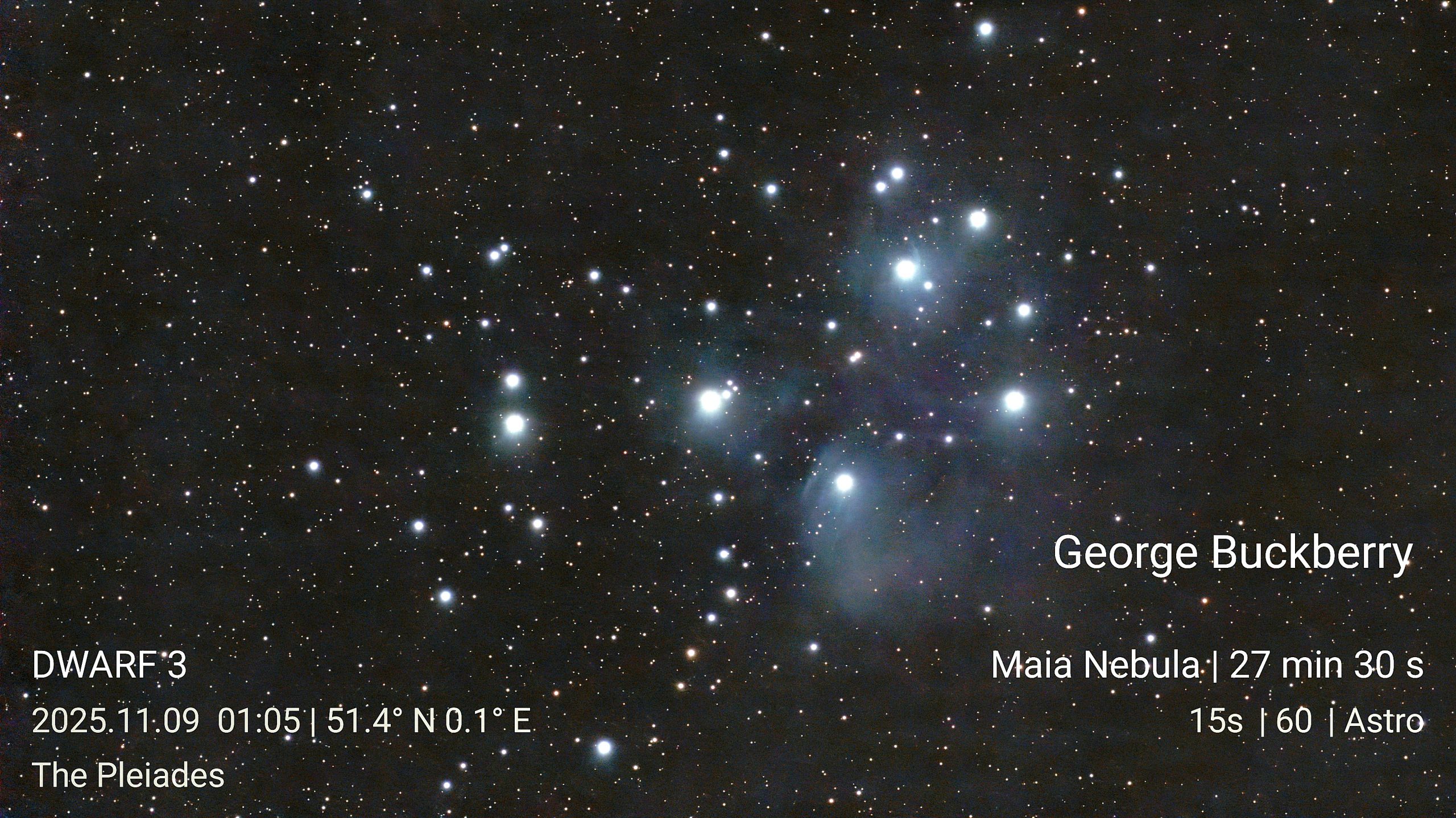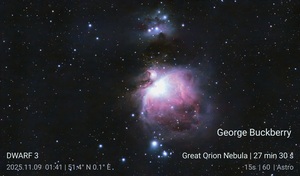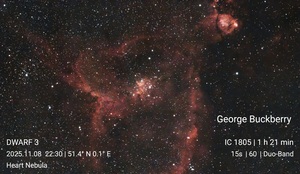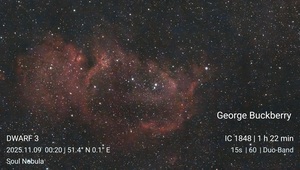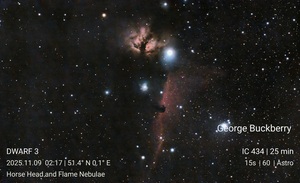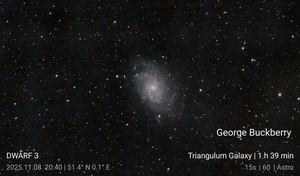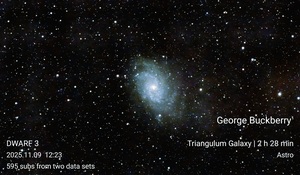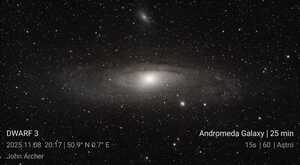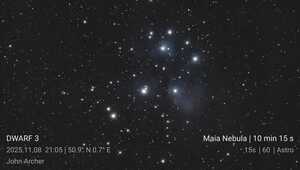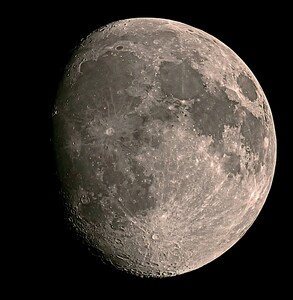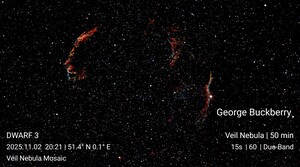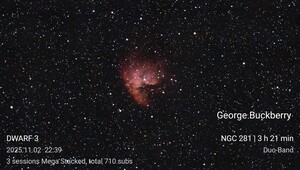[et_pb_section fb_built="1" _builder_version="4.27.4" _module_preset="default" global_colors_info="{}"][et_pb_row _builder_version="4.27.4" _module_preset="default" global_colors_info="{}"][et_pb_column type="4_4" _builder_version="4.27.4" _module_preset="default" global_colors_info="{}"][et_pb_text _builder_version="4.27.4" _module_preset="default" global_colors_info="{}"]
CMHASD Chairman Gary Hunt wrote; “CMHASD was honoured and delighted to deliver the Hall Place Stargazing Event on Wednesday 26th November 2025, to the people of Bexley and beyond!
The event was sold out months in advance, and its popularity seems to grow each successive event! The aim of our outreach, is to share the beauty of the night sky, explain just what we see, and hopefully spark further interest and desire to explore more about the subject. Sadly the weather on Wednesday night meant we could not use our telescopes to observe the wonderful night skies, however, we exhibited a range of telescopes and equipment. CMHASD members gave up their personal time to answer questions about astronomy. Other members, gave presentations on what telescope to get, the night sky, and even made a comet! The visitors all expressed their appreciation, some had said they had been before and wanted to return! A great evening and very worthwhile!”
Below are a selection of photos taken of the evening.
[/et_pb_text][/et_pb_column][/et_pb_row][et_pb_row _builder_version="4.27.4" _module_preset="default" column_structure="1_3,1_3,1_3"][et_pb_column _builder_version="4.27.4" _module_preset="default" type="1_3"][et_pb_image src="https://crayfordmanorastro.com/wp-content/uploads/2025/12/IMG_1992-1.jpeg" _builder_version="4.27.4" _module_preset="default" title_text="IMG_1992 (1)" hover_enabled="0" sticky_enabled="0"][/et_pb_image][/et_pb_column][et_pb_column _builder_version="4.27.4" _module_preset="default" type="1_3"][et_pb_image src="https://crayfordmanorastro.com/wp-content/uploads/2025/12/IMG_1997.jpeg" _builder_version="4.27.4" _module_preset="default" title_text="IMG_1997" hover_enabled="0" sticky_enabled="0"][/et_pb_image][/et_pb_column][et_pb_column _builder_version="4.27.4" _module_preset="default" type="1_3"][et_pb_image src="https://crayfordmanorastro.com/wp-content/uploads/2025/12/IMG_1998-1.jpeg" _builder_version="4.27.4" _module_preset="default" title_text="IMG_1998 (1)" hover_enabled="0" sticky_enabled="0"][/et_pb_image][/et_pb_column][/et_pb_row][et_pb_row _builder_version="4.27.4" _module_preset="default" column_structure="1_3,1_3,1_3"][et_pb_column _builder_version="4.27.4" _module_preset="default" type="1_3"][et_pb_image src="https://crayfordmanorastro.com/wp-content/uploads/2025/12/IMG_2006.jpeg" _builder_version="4.27.4" _module_preset="default" title_text="IMG_2006" hover_enabled="0" sticky_enabled="0"][/et_pb_image][/et_pb_column][et_pb_column _builder_version="4.27.4" _module_preset="default" type="1_3"][et_pb_image src="https://crayfordmanorastro.com/wp-content/uploads/2025/12/IMG_2008-1.jpeg" _builder_version="4.27.4" _module_preset="default" title_text="IMG_2008 (1)" hover_enabled="0" sticky_enabled="0"][/et_pb_image][/et_pb_column][et_pb_column _builder_version="4.27.4" _module_preset="default" type="1_3"][et_pb_image src="https://crayfordmanorastro.com/wp-content/uploads/2025/12/IMG_2010.jpeg" _builder_version="4.27.4" _module_preset="default" title_text="IMG_2010" hover_enabled="0" sticky_enabled="0"][/et_pb_image][/et_pb_column][/et_pb_row][et_pb_row _builder_version="4.27.4" _module_preset="default" column_structure="1_3,1_3,1_3"][et_pb_column _builder_version="4.27.4" _module_preset="default" type="1_3"][et_pb_image src="https://crayfordmanorastro.com/wp-content/uploads/2025/12/IMG_2011.jpeg" _builder_version="4.27.4" _module_preset="default" title_text="IMG_2011" hover_enabled="0" sticky_enabled="0"][/et_pb_image][/et_pb_column][et_pb_column _builder_version="4.27.4" _module_preset="default" type="1_3"][et_pb_image src="https://crayfordmanorastro.com/wp-content/uploads/2025/12/IMG_2023.jpeg" _builder_version="4.27.4" _module_preset="default" title_text="IMG_2023" hover_enabled="0" sticky_enabled="0"][/et_pb_image][/et_pb_column][et_pb_column _builder_version="4.27.4" _module_preset="default" type="1_3"][et_pb_image src="https://crayfordmanorastro.com/wp-content/uploads/2025/12/IMG_2027-1.jpeg" _builder_version="4.27.4" _module_preset="default" title_text="IMG_2027 (1)" hover_enabled="0" sticky_enabled="0"][/et_pb_image][/et_pb_column][/et_pb_row][et_pb_row _builder_version="4.27.4" _module_preset="default" column_structure="1_3,1_3,1_3"][et_pb_column _builder_version="4.27.4" _module_preset="default" type="1_3"][et_pb_image src="https://crayfordmanorastro.com/wp-content/uploads/2025/12/IMG_2032.jpeg" _builder_version="4.27.4" _module_preset="default" title_text="IMG_2032" hover_enabled="0" sticky_enabled="0"][/et_pb_image][/et_pb_column][et_pb_column _builder_version="4.27.4" _module_preset="default" type="1_3"][et_pb_image src="https://crayfordmanorastro.com/wp-content/uploads/2025/12/IMG_2039-1.jpeg" _builder_version="4.27.4" _module_preset="default" title_text="IMG_2039 (1)" hover_enabled="0" sticky_enabled="0"][/et_pb_image][/et_pb_column][et_pb_column _builder_version="4.27.4" _module_preset="default" type="1_3"][et_pb_image src="https://crayfordmanorastro.com/wp-content/uploads/2025/12/IMG_2044-1.jpeg" _builder_version="4.27.4" _module_preset="default" title_text="IMG_2044 (1)" hover_enabled="0" sticky_enabled="0"][/et_pb_image][/et_pb_column][/et_pb_row][et_pb_row _builder_version="4.27.4" _module_preset="default" column_structure="1_3,1_3,1_3"][et_pb_column _builder_version="4.27.4" _module_preset="default" type="1_3"][et_pb_image src="https://crayfordmanorastro.com/wp-content/uploads/2025/12/IMG_2046.jpeg" _builder_version="4.27.4" _module_preset="default" title_text="IMG_2046" hover_enabled="0" sticky_enabled="0"][/et_pb_image][/et_pb_column][et_pb_column _builder_version="4.27.4" _module_preset="default" type="1_3"][et_pb_image src="https://crayfordmanorastro.com/wp-content/uploads/2025/12/IMG_2049.jpeg" _builder_version="4.27.4" _module_preset="default" title_text="IMG_2049" hover_enabled="0" sticky_enabled="0"][/et_pb_image][/et_pb_column][et_pb_column _builder_version="4.27.4" _module_preset="default" type="1_3"][et_pb_image src="https://crayfordmanorastro.com/wp-content/uploads/2025/12/IMG_2050-1.jpeg" _builder_version="4.27.4" _module_preset="default" title_text="IMG_2050 (1)" hover_enabled="0" sticky_enabled="0"][/et_pb_image][/et_pb_column][/et_pb_row][et_pb_row _builder_version="4.27.4" _module_preset="default" column_structure="1_3,1_3,1_3"][et_pb_column _builder_version="4.27.4" _module_preset="default" type="1_3"][et_pb_image src="https://crayfordmanorastro.com/wp-content/uploads/2025/12/IMG_2053-1.jpeg" _builder_version="4.27.4" _module_preset="default" title_text="IMG_2053 (1)" hover_enabled="0" sticky_enabled="0"][/et_pb_image][/et_pb_column][et_pb_column _builder_version="4.27.4" _module_preset="default" type="1_3"][et_pb_image src="https://crayfordmanorastro.com/wp-content/uploads/2025/12/IMG_2054.jpeg" _builder_version="4.27.4" _module_preset="default" title_text="IMG_2054" hover_enabled="0" sticky_enabled="0"][/et_pb_image][/et_pb_column][et_pb_column _builder_version="4.27.4" _module_preset="default" type="1_3"][et_pb_image src="https://crayfordmanorastro.com/wp-content/uploads/2025/12/IMG_2056.jpeg" _builder_version="4.27.4" _module_preset="default" title_text="IMG_2056" hover_enabled="0" sticky_enabled="0"][/et_pb_image][/et_pb_column][/et_pb_row][et_pb_row _builder_version="4.27.4" _module_preset="default" column_structure="1_3,1_3,1_3"][et_pb_column _builder_version="4.27.4" _module_preset="default" type="1_3"][et_pb_image src="https://crayfordmanorastro.com/wp-content/uploads/2025/12/IMG_2052-1.jpeg" _builder_version="4.27.4" _module_preset="default" title_text="IMG_2052 (1)" hover_enabled="0" sticky_enabled="0"][/et_pb_image][/et_pb_column][et_pb_column _builder_version="4.27.4" _module_preset="default" type="1_3"][et_pb_image src="https://crayfordmanorastro.com/wp-content/uploads/2025/12/IMG_2057.jpeg" _builder_version="4.27.4" _module_preset="default" title_text="IMG_2057" hover_enabled="0" sticky_enabled="0"][/et_pb_image][/et_pb_column][et_pb_column _builder_version="4.27.4" _module_preset="default" type="1_3"][et_pb_image src="https://crayfordmanorastro.com/wp-content/uploads/2025/12/IMG_2058.jpeg" _builder_version="4.27.4" _module_preset="default" title_text="IMG_2058" hover_enabled="0" sticky_enabled="0"][/et_pb_image][/et_pb_column][/et_pb_row][et_pb_row _builder_version="4.27.4" _module_preset="default" column_structure="1_3,1_3,1_3"][et_pb_column _builder_version="4.27.4" _module_preset="default" type="1_3"][et_pb_image src="https://crayfordmanorastro.com/wp-content/uploads/2025/12/IMG_2060.jpeg" _builder_version="4.27.4" _module_preset="default" title_text="IMG_2060" hover_enabled="0" sticky_enabled="0"][/et_pb_image][/et_pb_column][et_pb_column _builder_version="4.27.4" _module_preset="default" type="1_3"][et_pb_image src="https://crayfordmanorastro.com/wp-content/uploads/2025/12/IMG_2062.jpeg" _builder_version="4.27.4" _module_preset="default" title_text="IMG_2062" hover_enabled="0" sticky_enabled="0"][/et_pb_image][/et_pb_column][et_pb_column _builder_version="4.27.4" _module_preset="default" type="1_3"][et_pb_image src="https://crayfordmanorastro.com/wp-content/uploads/2025/12/IMG_2069.jpeg" _builder_version="4.27.4" _module_preset="default" title_text="IMG_2069" hover_enabled="0" sticky_enabled="0"][/et_pb_image][/et_pb_column][/et_pb_row][et_pb_row _builder_version="4.27.4" _module_preset="default" column_structure="1_3,1_3,1_3"][et_pb_column _builder_version="4.27.4" _module_preset="default" type="1_3"][et_pb_image src="https://crayfordmanorastro.com/wp-content/uploads/2025/12/IMG_2073.jpeg" _builder_version="4.27.4" _module_preset="default" title_text="IMG_2073" hover_enabled="0" sticky_enabled="0"][/et_pb_image][/et_pb_column][et_pb_column _builder_version="4.27.4" _module_preset="default" type="1_3"][et_pb_image src="https://crayfordmanorastro.com/wp-content/uploads/2025/12/IMG_2074.jpeg" _builder_version="4.27.4" _module_preset="default" title_text="IMG_2074" hover_enabled="0" sticky_enabled="0"][/et_pb_image][/et_pb_column][et_pb_column _builder_version="4.27.4" _module_preset="default" type="1_3"][et_pb_image src="https://crayfordmanorastro.com/wp-content/uploads/2025/12/IMG_2076-1.jpeg" _builder_version="4.27.4" _module_preset="default" title_text="IMG_2076 (1)" hover_enabled="0" sticky_enabled="0"][/et_pb_image][/et_pb_column][/et_pb_row][et_pb_row _builder_version="4.27.4" _module_preset="default" column_structure="1_3,1_3,1_3"][et_pb_column _builder_version="4.27.4" _module_preset="default" type="1_3"][et_pb_image src="https://crayfordmanorastro.com/wp-content/uploads/2025/12/IMG_2077.jpeg" _builder_version="4.27.4" _module_preset="default" title_text="IMG_2077" hover_enabled="0" sticky_enabled="0"][/et_pb_image][/et_pb_column][et_pb_column _builder_version="4.27.4" _module_preset="default" type="1_3"][et_pb_image src="https://crayfordmanorastro.com/wp-content/uploads/2025/12/IMG_2081-1.jpeg" _builder_version="4.27.4" _module_preset="default" title_text="IMG_2081 (1)" hover_enabled="0" sticky_enabled="0"][/et_pb_image][/et_pb_column][et_pb_column _builder_version="4.27.4" _module_preset="default" type="1_3"][et_pb_image src="https://crayfordmanorastro.com/wp-content/uploads/2025/12/IMG_2084-1.jpeg" _builder_version="4.27.4" _module_preset="default" title_text="IMG_2084 (1)" hover_enabled="0" sticky_enabled="0"][/et_pb_image][/et_pb_column][/et_pb_row][/et_pb_section]

